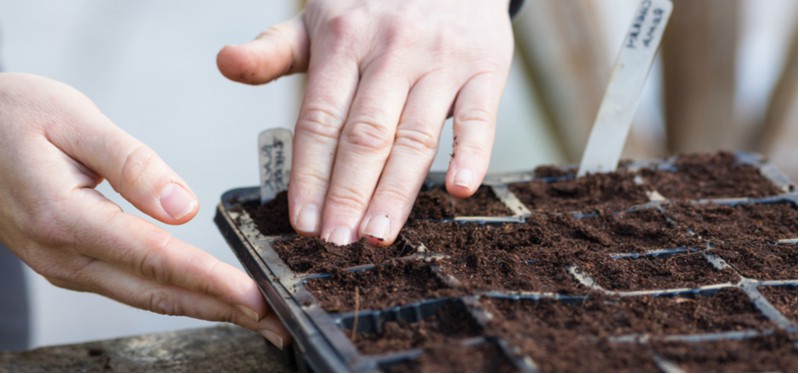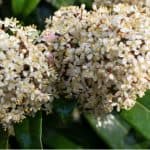Last updated on April 26th, 2022
Our site is reader supported, this means we may earn a small commission from Amazon and other affiliates when you buy through links on our site.
Springtime, especially the beginning of spring is a perfect time to plant your perennials seeds. You have spent hours gazing through seed catalogues and garden centre seed shelves and choosing your favourite ones, but how do you grow quick-growing perennials from seed?
The good news is it’s quite easy if you follow these simple steps. You will be pleased to know that you don’t need any expensive growing equipment, although it can be beneficial to have a heated propagator to speed the process up and improve the germination rate, especially for perennials that may take a while to germinate. Some perennial seeds can germinate in as little as 1 week to as long as a couple of months, and it’s always worth being patient and is very rewarding.
Things you will need:
- A seedling tray or some pots (A propagator can be helpful but isn’t essential)
- Multi-purpose compost with no peat or ready-made seed compost
- Your perennial seeds of choice
- A container or compost riddle
When you are ready and have everything you need, follow these steps to get started.
Step One – Fill your seed trays with seed compost
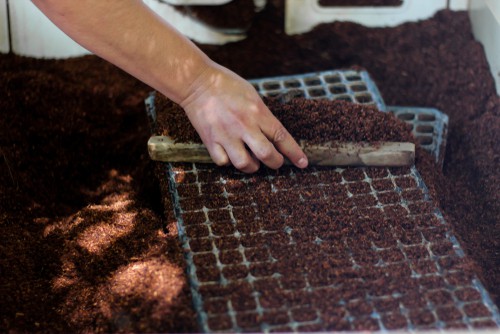
Take a seed tray (can use pots if you don’t have a seed tray) and fill it with the seed compost or multi-purpose compost you have. Gently firm it down but not too much, if it is too compacted the seedlings will struggle to root. Water the compost thoroughly with a fine rose and let the water drain all the way through, you don’t want the compost to be soggy, just moist. This is a very important step to undertake before you even tackle sowing the seeds.
Step Two – Sow the seeds
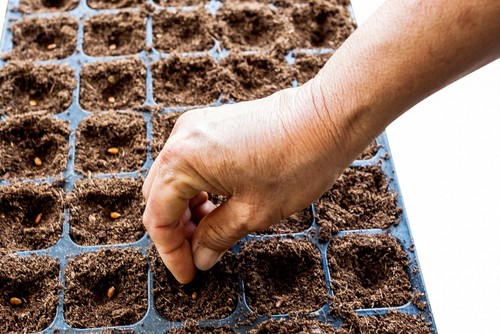
Once the water has drained thoroughly, scatter the seeds over the surface of the tray as evenly as possible. We highly recommend using different trays for different varieties of plants. If you have, for example, four types of seeds you are trying to grow, it is better to sow them in individual containers so that they don’t get mixed up, you always know what you are growing, and it helps if they happen to germinate at different times.
A useful tip is to get a toothpick and a small piece of paper to sow the seeds one at a time.
Step Three – Sieve a thin layer of compost over the seeds
Scatter a thin layer of compost over the seeds, perhaps a few millimetres thick. One quick and easy way to do this is to take a large plastic container, usually a pot from a previous plant with holes at the bottom and sieve the compost through the holes until you have a fine layer over the entire tray. Try to scatter it evenly if you can, we also recommend investing in a compost sieve if you plan on sowing seeds or making your own compost regularly, they are generally very affordable.
Step Four – Place the seed trays in a warm room or propagator
When you have sown your seeds place the tray in a warm, sunny spot or into a propagator. Heated propagators can be a great investment and will help germinate seeds quickly because they have consistent heat, however, it’s often not essential if you can keep the seeds in a warm room at room temperature.
Your seeds can take up to two months to germinate depending on the variety you have sown, so be very patient with them in the beginning. During this time, whether it’s two weeks or two months, keep the soil moist by watering it regularly being careful not to drown them or you leave the soil and seeds susceptible to rot.
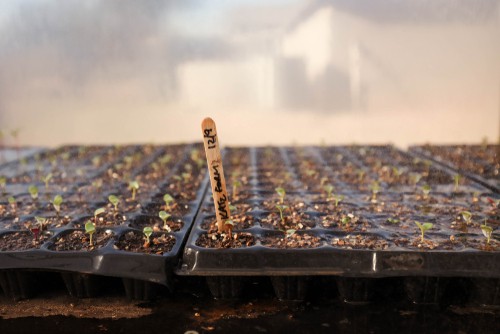
Once they germinate we recommend moving them into a slightly cooler room or turning off the heated propagator and letting them grow in for a while until they are large enough to be planted on.
Step Five – Pot them on into single pots
Once it’s time, and they are big enough to go into their own pot, carefully prick them out of the seed tray and transplant them into a slightly larger pot.
See a more in-depth guide on pricking out seedlings here
Depending on the type of plant you might have to do this transplanting process more than once, moving them regularly and to incrementally bigger pots until such time as the weather is tolerant to new plants and your seedlings are established enough to be moved to their permanent home.
By following these steps you can very quickly (and easily) grow your perennials from seed and have an abundance of perennials at the beginning of the growing season ready to fill your garden with colour. And of course, being perennials, once this hard part is done, there is very little you will need to do, and if your plants happen to be self-seeding they will come back on their own year after year.
Image credits – Shutterstock.com
Last update on 2024-07-27 / Affiliate links / Images from Amazon Product Advertising API

